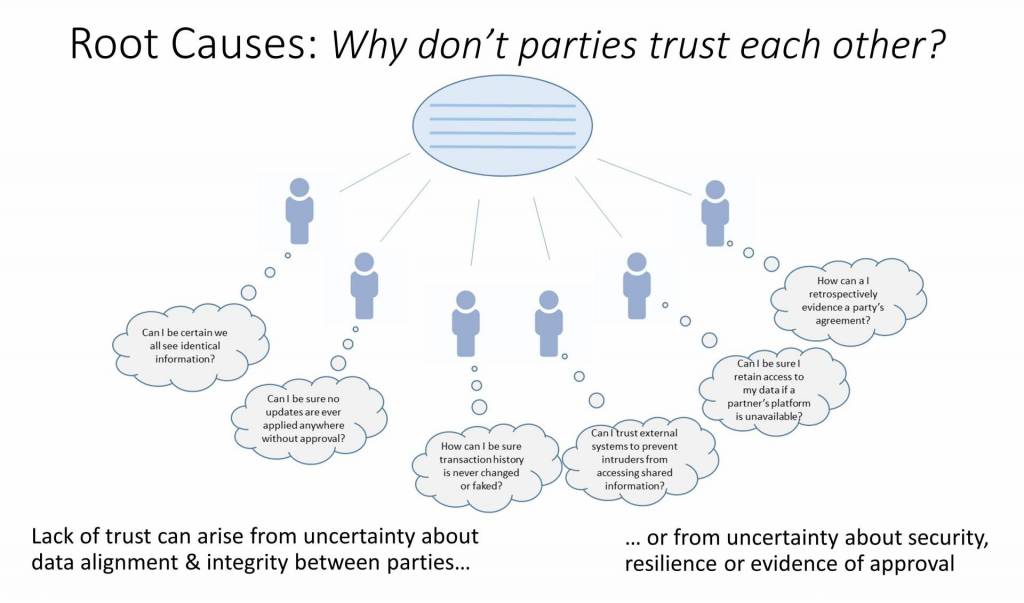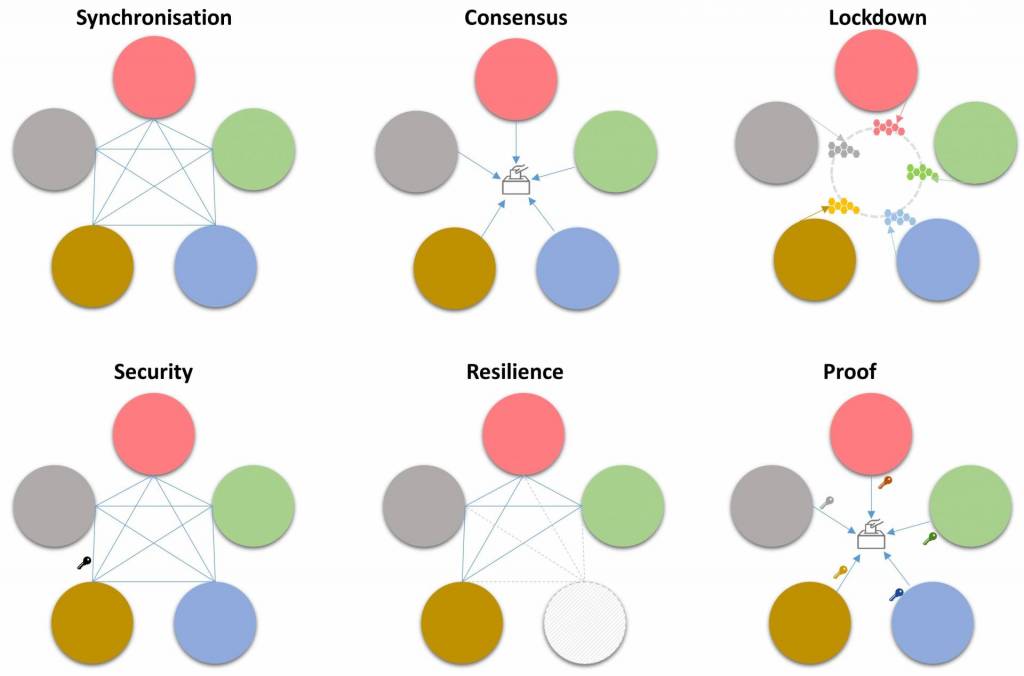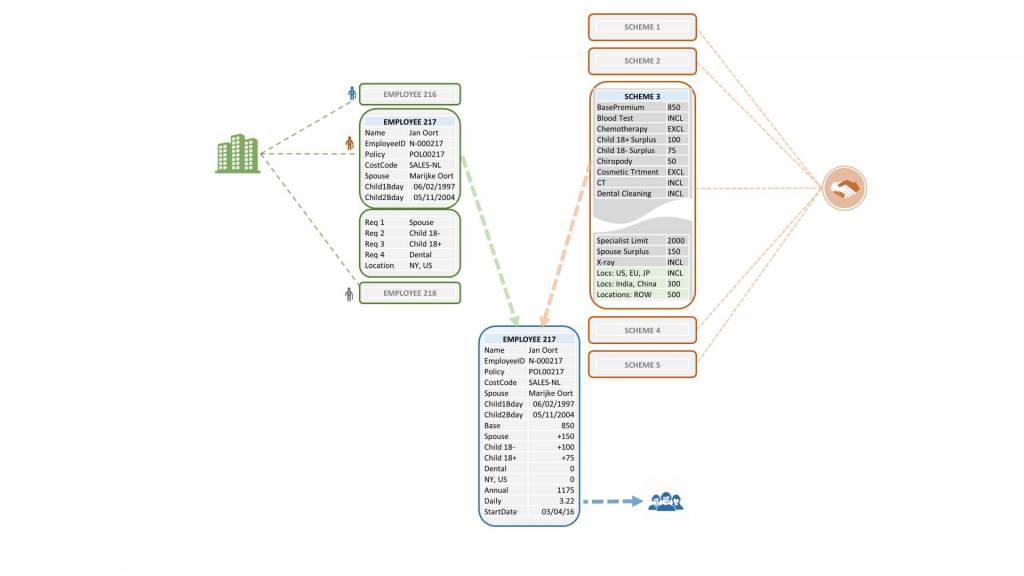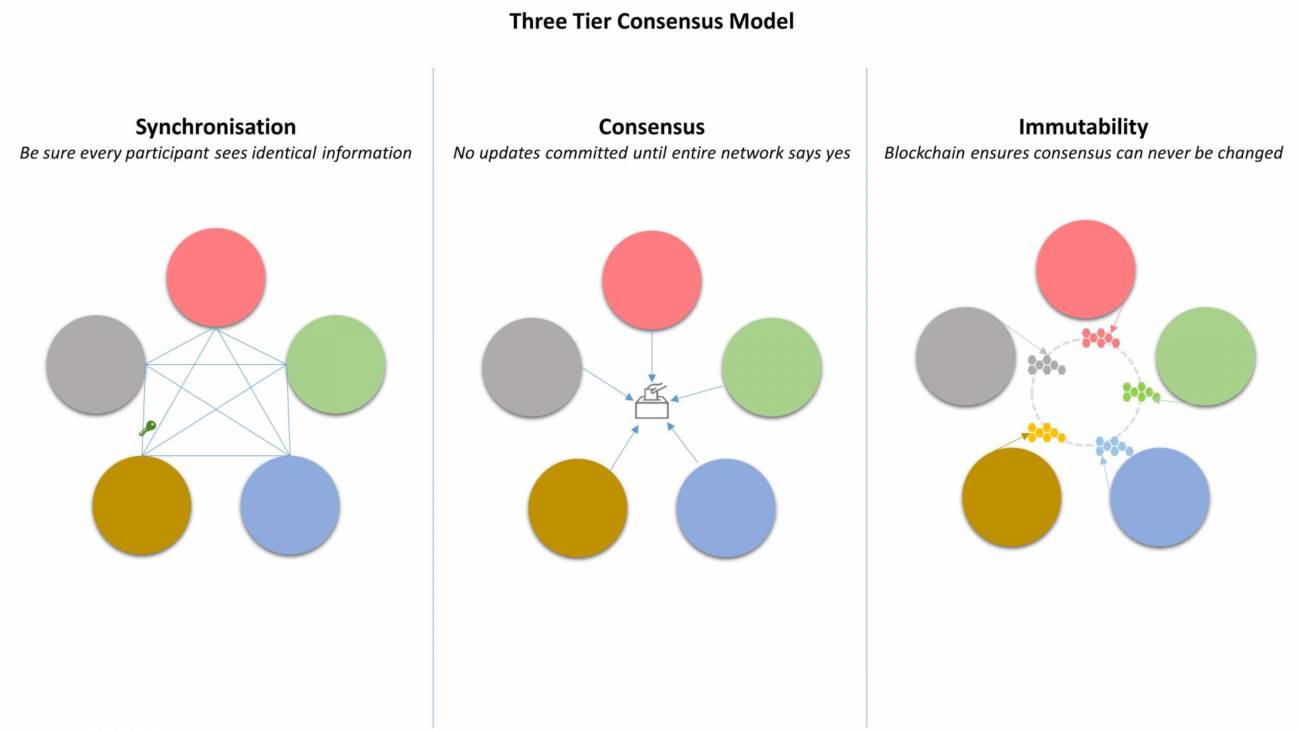Sharing with trust
Imagine a group of separate companies who co-own and approve terms of a contract.
For example buyers, suppliers, respective banks and IT suppliers agreeing terms of supply chain finance. Or brokers, insurers, Syndicates, intermediaries and regulators who share view and sign-off of Risks insured in Lloyd’s of London. Or any distributed market where mistrusting organisations share information ownership.
Six degrees of mistrust
The term mistrusting here refers to specific worries about external sharing which don’t occur, or are fairly easily handled, for internal datasets. Without visibility of external systems, can you be sure data is aligned, validated, approved, locked down, secured from intrusion, and resilient across the group? Even if you are, can you prove it – to audit, operations and regulators?

Mistrust costs $$$
Companies who mistrust their partners keep separate versions of the shared ledger to be sure they can independently guarantee it as correct, signed off, secure etc. For big networks and/or complex data/document sets, the result is a lot of re-keying, cross-checking and correction, and duplication of documents, data and process.
In the Lloyd’s insurance example, this sort of administrative friction accounts for up to a third of the cost of the premium.

What’s Concordata doing to create trust, and prove it?
CEO Ben Kahn, an IT strategy consultant with 25 years insurance experience, teamed up with CTO Mark Lester, who has built enterprise platforms for media giants including Yahoo! to create a platform which leverages blockchain technology to address the issue of distributed trust.
Concordata is a distributed ledger platform, designed to create and evidence trust across groups of companies, eliminating causes of duplication & cross-checking, and the costs and delays they cause.
This is how it works:
- One party creates or imports the list of data items and rules for how they can be updated.
- They add parties to the contract, who instantly see identical information in their systems.
- Each parties may propose additional fields or rules, if required, until the contract is ready
- When all have provide signed approval for each item, rule and party, the contract goes live.
- Only updates which meet the agreed rules are accepted, and these are replicated to each ledger
- When all systems have approved update, proof of consensus is written to the blockchain
Each party can use a console to see real-time evidence of alignment, consensus and lockdown.
Concordata has lots of applications
Concordata are talking with a number of global organisations and workshopping their distributed ledger and blockchain use cases. It is early days yet – clearly loads more applications for distributed ledger will appear – but scenarios modelled so far have fallen into three broad themes:
i. Many different parties share visibility/sign-off on a large or complex data set
ii. Customer’s needs auto-matched to supplier’s terms, bound, priced & reported
iii. Reconciliation across jointly-owned data set
The Lloyd’s of London Insurance market discussed above is an example of the first.
For the second, imagine employees’ details supplied by the employer, matched to corporate health plan options maintained by the insurer, billing details auto-calculated and posted to blockchain for secure access by call centre
For the third, imagine an executive when checking out of a hotel, receives hotel-supplied billing, reconciled against pre-negotiated corporate terms, pushed from the blockchain to his smartphone.

If you would like to learn more about Concordata, would like a demo, or have an interesting use case you would like modelled, please visit their website on https://www.concordata.co.uk/.























